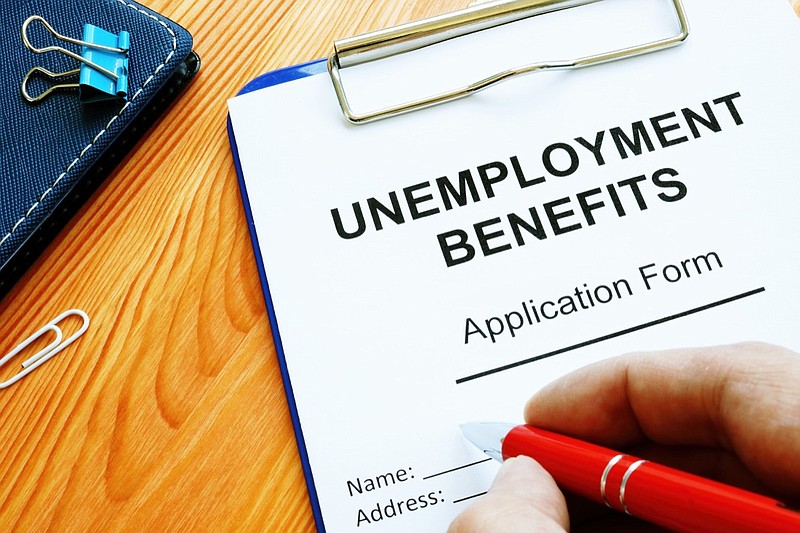The number of Tennesseans and Georgians filing initial claims for unemployment rose last week as the coronavirus pandemic continues to limit some business activity.
Despite a nationwide drop in new jobless claims last week, the number of Tennesseans seeking first-time jobless benefits after recently losing their jobs jumped in the week ended Jan. 2 to the highest weekly level in over five months.
The Tennessee Department of Labor and Workforce Development said 16,554 laid-off workers filed initial jobless claims last week following the Christmas holidays, including 670 new claims in Hamilton County and 254 new claims in Bradley County. The number of jobless claims filed last week was up nearly five-fold from a year ago in Tennessee, which the online website WalletHub calculates had the sixth slowest 6th slowest recovery among the 50 states in the U.S. over the past year.
In Georgia, regular unemployment insurance initial claims last week totaled 31,458, up 12,498 over the previous week.
Nationwide, the number of Americans seeking unemployment aid fell slightly last week to 787,000, a historically high number that points to a weak job market held back by the viral pandemic. Thursday's figure from the Labor Department shows that even with the pandemic recession in its 10th month, many businesses are still laying off workers. Before the recession, weekly jobless claims typically numbered around 225,000.
"We see still heartbreakingly elevated levels of new unemployment claims with more than 19 million Americans recently receiving some form of jobless assistance," said Mark Hamrick, senior economic analyst for Bankrate. "One can take only a modest amount of solace from the fact that a fresh round of unemployment assistance was approved, meaning that those most in need weren't pushed over a cliff after Christmas. It is likely that further assistance including larger stimulus payments will be on the way under the new Congress and presidential administration."
The renewed surge in virus cases has caused millions of consumers to avoid eating out, shopping and traveling. And states have imposed new restrictions on restaurants, bars and other businesses. Economists at TD Securities estimate that more than half of states are now restricting gatherings to 10 people or fewer, up from roughly a quarter in September.
Those restrictions are forcing many companies, having run through much of their cash reserves, to cut more jobs.
"Unemployment remains extremely high, although not nearly as bad as it was in the spring, and the pace of improvement in the job market has slowed dramatically from the summer," said Gus Faucher, an economist at PNC Financial. "Job growth should pick up in the spring as vaccine distribution continues, better weather allows for more outdoor activities and states gradually loosen restrictions."
Many economists, along with the Federal Reserve's policymakers, say they're hopeful that once the coronavirus vaccines are more widely distributed, the economy will achieve a broader recovery in the second half of the year.
The $900 billion financial aid package that Congress enacted last month should also help accelerate an eventual rebound. Late Wednesday, Goldman Sachs upgraded its forecast for economic growth this year to a robust 6.4%, up from 5.9%. Its upgrade was based in part on the expectation that the Biden administration, with help from the now-Democratic Senate, will support another rescue aid package.
Last month's stimulus measure provided a $300-a-week federal jobless benefit on top of an average state benefit of about $320. As many as half the states are now distributing the federal benefit, according to an unofficial tally at UnemploymentPUA.com. In states that take longer to pay out the $300, any missed payments can be made retroactively.
Tennessee and Georgia labor department officials said they are still waiting on the federal regulations for some of the new payments. But Georgia Labor Commissioner Mark Butler said Thursday the state was able to pay most Georgians without interruption, even with the new guidelines put forth by the new legislation.
"We will be implementing even more changes to pay those individuals who have already exhausted benefits and will also implement some of the new programs that were passed in legislation as quickly as possible," Butler said. "Some of the elements of the new bill are going to require extensive new programming due to how complex the rules were written in the legislation."
A federal program that provides extended benefits, after state benefits run out, was lengthened to 24 weeks by the aid package. That program will remain in place until mid-March. A separate program that provides jobless aid to contractors and gig workers who previously weren't eligible was also extended for 11 weeks. Both benefits had briefly expired Dec. 26, threatening about 13 million people with a cutoff in aid.
- Compiled by Dave Flessner
